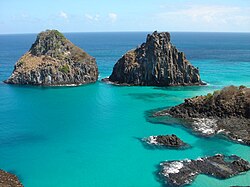This article has multiple issues. Please help improve it or discuss these issues on the talk page . (Learn how and when to remove these messages)
|
Large-scale coastal behaviour is an attempt to model the morphodynamics of coastal change at time and space scales appropriate to management and prediction. [1] [2] Temporally this is at the decade to century scale, spatially at the scale of tens of kilometers. [2] It was developed by Huib J. de Vriend. [3]
Modelling large-scale coastal behaviour involves some level of parameterisation rather than simply upscaling from process or downscaling from the geological scale. It attempts to recognise patterns occurring at these scales. Cowell and Thom (2005) recognise the need to admit uncertainty in large-scale coastal behaviour given incomplete process knowledge.

